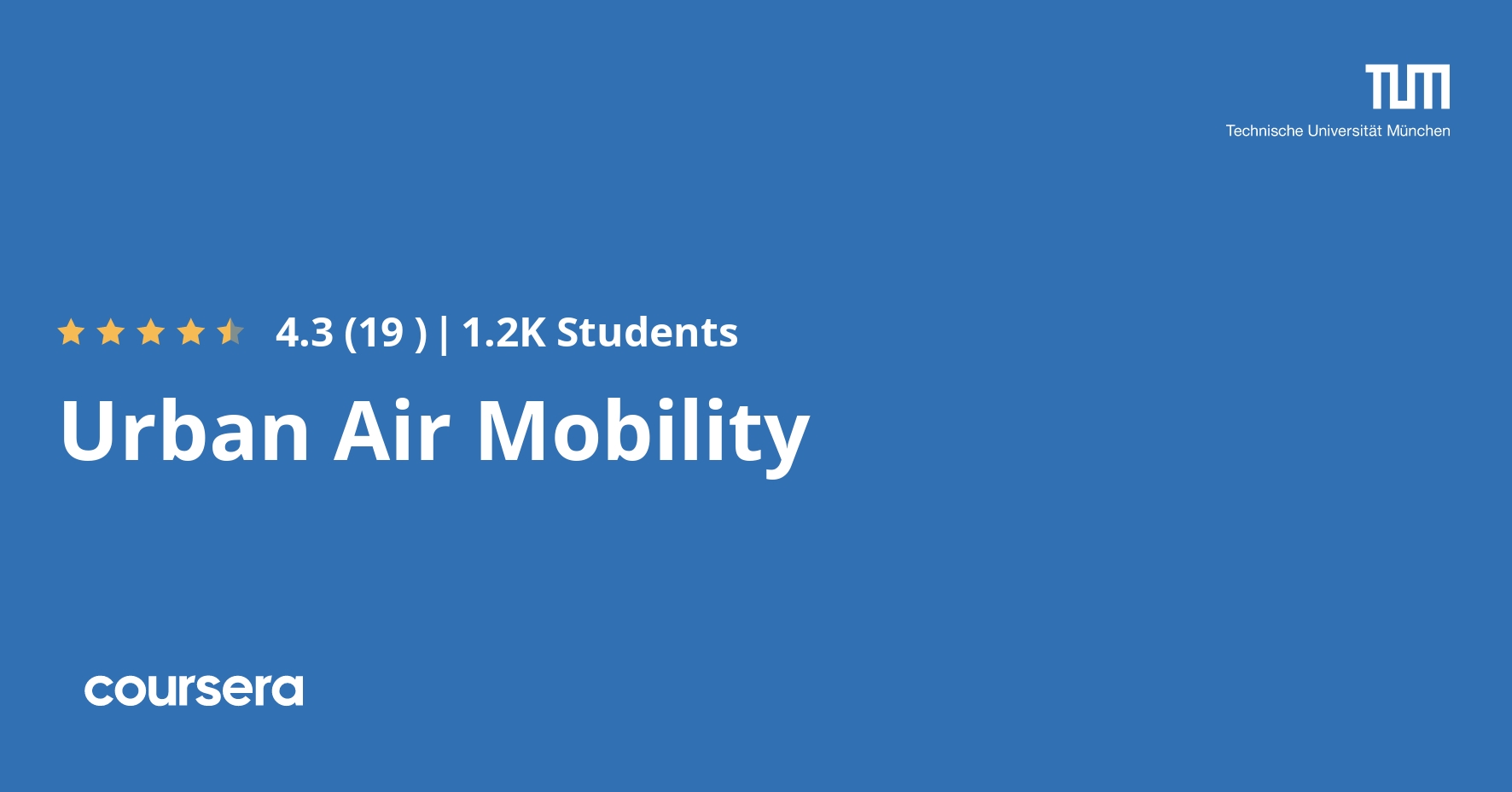Description
View the course trailer: https://www.youtube.com/watch?v=EimqY7-0yRs&t=33s
How can the traffic collapse of the global multimillion cities be prevented? One way out could lead upwards: Urban air transport. By 2030, it is estimated that around 60 percent of humanity will live in cities. If it is possible to shift some of the traffic from the roads to the air, researchers believe this could help to further ensure the basic human need for mobility. But there are still some technical, social, and legal preconditions to be met.
The course gives a first introduction to the relatively new field of Urban Air Mobility, explaining the technical background as well as giving an overview of all other necessities such as air traffic management, public acceptance, and ecological sustainability. This course is primarily aimed at master’s students and PhD candidates and young professionals interested in exploring new fields in aerospace.
What you will learn
Introduction – What is Urban Air Mobility?
This first course module gives an overview of all aspects that define “Urban Air Mobility”. It explains the concept of Urban Air Mobiltiy as well as all crucial factors, such as vehicle and power train design, infrastructure and vertiport design, air traffic management, the ensuring of safety and airworthiness, sustainability, use cases and concept of operations, city integration and ground transport connection and political support and public acceptance. – Dr Kay Plötner (Bauhaus Luftfahrt Munich).
Urban Air Mobility from an Industry Perspective
In five chapters, Dr. Markus May presents the approach to the topic of Urban Air Mobility from an industry perspective and shows the ideas of Airbus in this context. Dr. May describes the different design ideas that Airbus has developed with Vahana and the CityAirbus. It also explains how Airbus managed to create a creative workings space in a corporate environment.
Political perspectives
In this module, the Federal Ministry for Digital and Transport presents the national policies and the legal framework for Urban Air Mobility in Germany. The course also discusses the German Federal Government’s action plan on “Unmanned Aircraft Systems and Innovative Aviation Concepts”, as well as the digital platform “dipul” on unmanned aviation. The course will additionally focus on legal requirements, especially with regard to obstacles for the breakthrough of urban air mobility. The module concludes with an interview on what the future of urban air mobility will look like. // The course lecturers are Dr. Jan Dirks, Dipl.-Ing. Christoph Noack, Rahel Jünemann and Dr. Daniel Phiesel.
Demand Modeling for Urban Air Mobility
This course describes different approaches and data used to model travel demand. An introduction to discrete choice models is provided. An example of demand prediction for an air taxi commuting service is provided. The example uses a discrete choice model and location-based data from a telecommunications company to predict demand in the 40 largest cities in the U.S. /// Dr. Laurie Garrow is an expert in air travel behavior and market analysis. She is a Professor and Co-Director of the Center for Urban and Regional Air Mobility at Georgia Tech and owner of Atlanta Analytics. She has more than 20 years of experience in aviation and previously worked at United Airlines.




